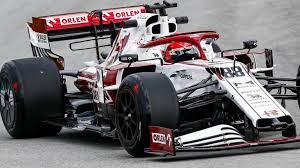Just as a flood of new fans has discovered interest in Formula 1 as a result of lockdown binges of Netflix’s Drive to Survive series, the sport is shuffling the deck for 2022. Changes in the rules for the winged wonder cars include plans for teams to share some common components to save money and revised aerodynamics that should foster closer racing.
As the contracted sole supplier of tires to Formula 1 through 2024, Pirelli wants to be able to transfer know-how between its racing and production tires, and it wouldn’t mind if customers could look at the racing tires and see in them a glimpse of the rubber they could buy for their own cars.
That’s different from the outgoing tires, whose roots stretch to the 1960s, when Goodyear, Firestone, and Dunlop were the tire suppliers. For 2022, Pirelli’s F1 tires will be more contemporary and relevant.
Today’s 13-inch tires are plenty fast, as their tall sidewalls let them squish and morph over the track surface for excellent grip. But all that motion takes its toll as the rubber heats and wears, producing the dreaded “degradation.” That the word F1 teams use to describe the loss of grip as tires wear. Watch a race, and you’ll hear it used frequently in the radio communications between drivers and crew.
To avoid losing too much traction—and suffering excessive degradation—drivers pilot their cars cautiously, seeking to manage the tire wear so that each set will last long enough until the planned pit stop for replacement. Failure to do this means losing time to rivals through slower lap times or time lost in an additional stop for another set of tires.
A key aim for the larger 2022 18-inch tires is for the tires to maintain their grip for longer, so drivers can race hard (“push,” in racing jargon) rather than managing their tire wear, says Mario Isola, head of Pirelli’s Formula 1 racing program. Creating these new tires is much more complicated than simply enlarging the tire’s inner diameter to fit on a 5-inch-larger wheel.
“We had to design a tire completely from scratch,” he says. “It is not just designing a different size. It is a different construction. Together with the new size, the request was to design a tire with different characteristics, so [there’s] no overheating because drivers want to push for the whole race, much reduced degradation, a wider working range, so it was not just a matter of designing a new size.”
The company could have taken the approach to adapt the old tires to a different size, but that would have been a poor solution, Isola says. “At the beginning we had two choices,” he notes. “One was to take the current compounds and try to upgrade them with the characteristics required for an 18-inch tire. The second one was to start a completely new development, different ingredients and new technology and try to make a real big step compared to this year.”
“We decided for this second direction,” he explains. “It is more risky but at the end it is a better decision because [the] result of the test is positive and the feedback coming from the drivers is very positive.”
Source : https://www.popsci.com/technology/f1-car-new-tire-upgrade/







